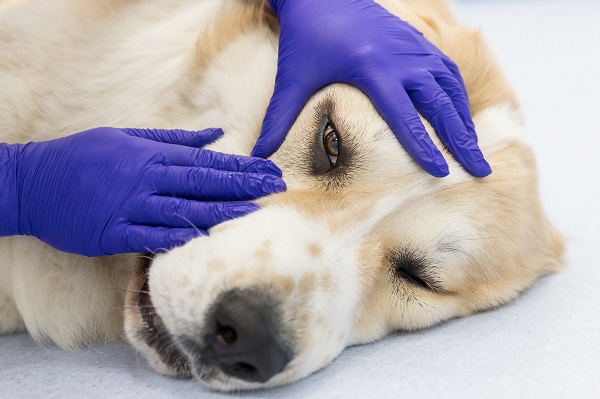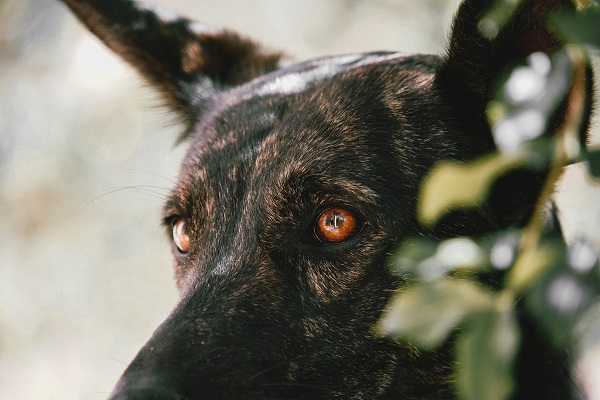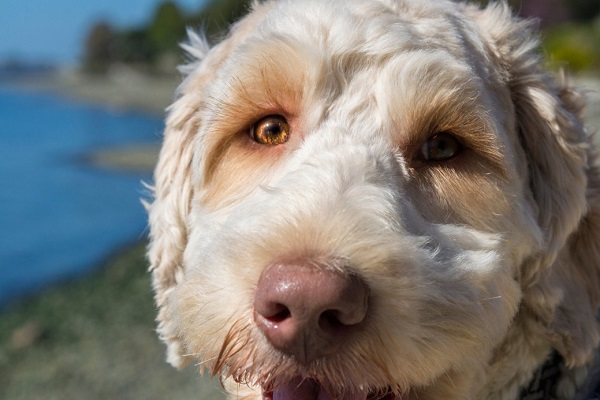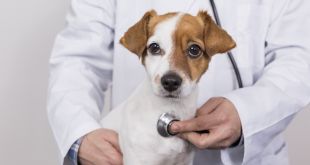Our dogs use their eyes for several things, such as exploring the environment, spotting squirrels, and playing fetch. So when they start suffering from problems such as glaucoma, you need to take quick action and take them to the veterinarian.
If their eyes seem cloudy and in pain, it could be a case of glaucoma. Glaucoma is one eye condition that often gets painful and needs immediate treatment and diagnosis.
So, here is what you should expect if your dog suffers from this condition.
What is glaucoma in dogs?
Glaucoma is a medical condition; where intraocular pressure on your dog’s eyes increases. It occurs because aqueous humor builds up in their eyes. It is an eye fluid that provides oxygen all across the eye and nourishes it. The fluid drains from their eyes through the filtration angle between their cornea and iris.
There needs to be an equal balance between the production of aqueous humor and its drainage to ensure that the intraocular pressure remains within normal limits. The pressure increases when this balance gets disrupted, and the fluid does not drain effectively.
If the pressure on their eyes increases, it can damage their optical disks and retinas, thus leading to permanent blindness.
Why do dogs suffer from glaucoma?
The main reason for glaucoma in dogs is the blocked drainage of aqueous humor from their eyes.
Some dog breeds are supposed to be genetically predisposed to primary glaucoma, and enumerated below:
- Cocker Spaniel
- Basset Hound
- Poodle
- Terriers
- Beagle
- English Cocker Spaniel
- Chow Chow
- Chinese Shar-Pei
- breeds from Arctic Circle, such as Norwegian Elkhounds and Siberian Husky,
- Akita Inu
- Dalmatian
- Alaskan Malamute
- American Cocker Spaniel
- English Springer Spaniel
- Samoyed
- Flat-Coated Retriever
- Giant Schnauzer
- Shih Tzu
- Great Dane
- Bouvier des Flandres
- Greyhound
- Smooth-Haired Fox Terrier
- Bull Mastiff
- Italian Greyhound
- Welsh Springer Spaniel
- Miniature Pinscher
- Wirehaired Fox Terrier
- Miniature Schnauzer
Several eye conditions can lead to secondary glaucoma. The reasons are enumerated below:
- eye inflammation
- eye trauma
- lens luxation
- cataracts
- eye tumors
- subluxation
- cancer
- retinal detachment
What are the symptoms and causes of glaucoma in dogs?
In the early stages, it is hard to detect glaucoma in dogs.
The symptoms of glaucoma disease become more pronounced as the disease progresses – it does not matter if it happens gradually or rapidly.
The most prominent symptoms are as follows:
- vision loss
- hazy, blue, and cloudy eyes
- eye rubbing
- bulging eye – also known as buphthalmos
- eye redness
- dilated, unresponsive, and slow-moving pupil
- drooping eyelids
- pain, excessive tearing, and squinting of the eyes
If your dog has secondary glaucoma, it will show a few more symptoms, such as the iris sticking to the cornea and inflammatory debris in the front of its eyes. In addition, you might notice other signs, such as hiding.
How is glaucoma diagnosed in dogs?
If your dog shows any glaucoma symptoms, please get in touch with the vet and schedule an appointment. First, outline the medical history of your dog. Then, tell the doctor about the signs your dog is suffering from.
Could you inform them about when the symptoms started to show and if they have any history of eye problems such as eye injuries? The vet would then examine the eye and use a tonometer to measure the pressure of the eyes. Based on the results of tests and another diagnosis, they would determine the treatment.
What are the types of glaucoma in dogs?
There are two kinds of glaucoma your dog may suffer from – primary and secondary. Primary glaucoma is referred to as inherited glaucoma. Secondary glaucoma is caused by other conditions already mentioned above.
In primary glaucoma, the filtration angle is genetically malformed, preventing sufficient drainage of aqueous humor. This type of glaucoma can be classified as closed or open-angle. Among those conditions, subluxation is a situation where the lenses of a dog’s eyes change their positions.
How do cloudy eyes appear to be in dogs?
A dog’s eyes can be cloudy when the parts you can see are no longer so easily visible. It includes the likes of lenses and corneas. The cornea is the outer layer of the front of their eyeball, and the lens is suspended within their eyes.
So it must be just a bit hazy, or the area could be opaque, which means it is so dense that you cannot see through it. It may be that an entire eye appears that way, or it could be just a few parts.
How do a dog’s eyes look when they are healthy?
If your dog’s eyes are normal and healthy, they will look clear in the front. This is because it would provide a window to see the different structures within their eyes, such as the pupil and iris.
You should be able to see the lens, which is the disk-like structure located behind the iris, rather clearly. For that matter, their eyes’ inner and outer systems would be so transparent that you can see their tapetum lucidum.
How is glaucoma in dogs treated?
The treatment of glaucoma in dogs depends on the severity of the problem and the reason behind suffering from the same. The main aim of such therapy is to ensure relief from the pain caused by the condition and restore the normal pressure of their eyes by either decreasing fluid production, increasing fluid drainage, or doing both.
The doctors will treat the underlying conditions if your dog suffers secondary glaucoma. Usually, doctors advise medications for treating the problem. However, if they do not work, they suggest performing surgery.
View this post on Instagram
How to prevent cloudy eyes in your dog?
It is not always possible to prevent cloudy eyes in your dog, but you can always take precautions to protect your dog’s eyes in the best way possible. The best way to avoid such vision and most other health issues your dog could suffer from is by taking them to visit the vet at least once a year. Such routine veterinary examinations would be immensely beneficial for them. It can help doctors detect the problem early and treat them.
Conclusion
The cost of treating glaucoma in dogs would vary with the route recommended by the doctor treating your dog. However, managing the condition tends to be a bit expensive. The costs can run up to thousands of dollars throughout your dog’s life. Thanks to the medicines and routine check-ups.
If you are getting them treated by specialists such as veterinary ophthalmologists, the costs of check-ups can only increase. In the case of surgery, the initial outlay would be high, but these would not be costs that would be repeated later on.
Frequently Asked Questions
Should I take my dog to the vet for cloudy eyes?
If your dog has cloudy or hazy eyes, you must take them straight away to a doctor so that treatment can start as soon as possible. Such eyes indicate vision issues and are painful too.
How do vets treat glaucoma in dogs?
While treating glaucoma in dogs, vets prescribe medicines that reduce the pressure inside their eyes. You can administer them systemically (orally) or topically (eye drops).
What happens if I do not treat my dog’s glaucoma?
It would make them permanently blind – it is as simple as that! If you do not want that to happen, the moment you notice any such symptom take them to the vet.
Is it normal for pups to have cloudy eyes?
No, it is not usual for a pup to have cloudy eyes. Such eyes indicate that they could suffer from medical issues like cataracts.
Can a dog recover from a cloudy eye?
It depends on the reason why your dog is suffering from the problem. There is no cure if it is due to a condition such as corneal dystrophy. It can be treated.

 DogExpress
DogExpress





















 in Chandigarh, India.
in Chandigarh, India. 
